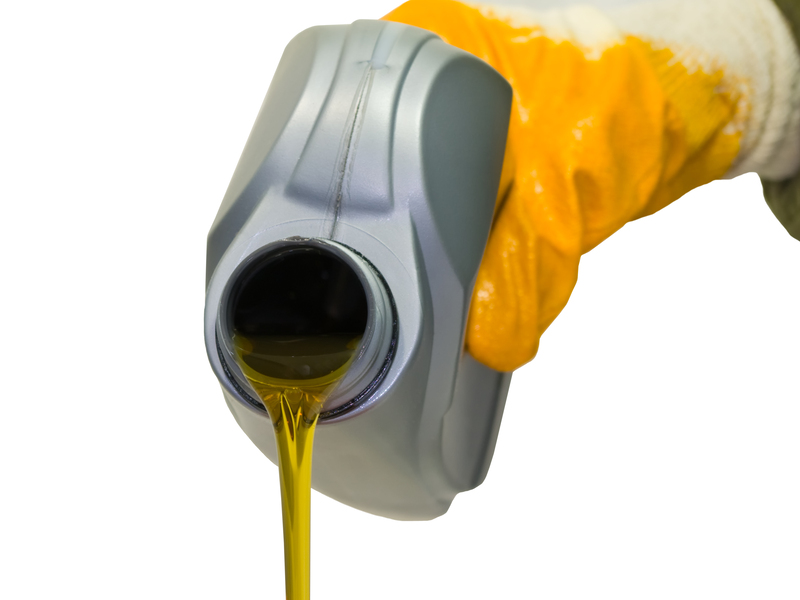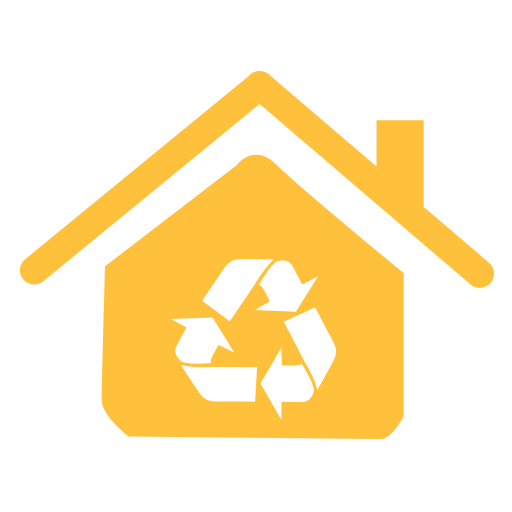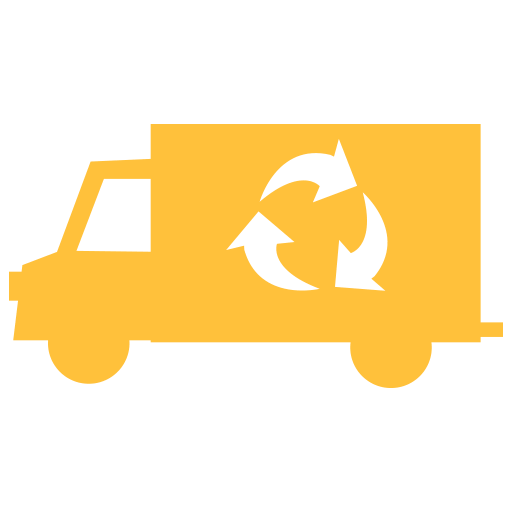Hazardous Waste 101: Key Materials That Pose a Significant Risk
Posted on 27/08/2025
Hazardous Waste 101: Key Materials That Pose a Significant Risk
Hazardous waste is an unavoidable byproduct of modern living, stemming from industries, households, and even healthcare facilities. While many wastes can be managed safely, hazardous materials pose unique challenges due to their potential to harm human health, natural ecosystems, and the environment. In this comprehensive guide, we will explain what hazardous waste is, the primary types, their impact, and best practices for proper management.

What Is Hazardous Waste?
Hazardous waste refers to substances or byproducts that are dangerous or potentially harmful to public health or the environment. According to the U.S. Environmental Protection Agency (EPA), hazardous wastes are defined by one or more of the following characteristics:
- Ignitability: Can easily catch fire (e.g., paints, solvents).
- Corrosivity: Can corrode metals or destroy living tissue (e.g., acids, bases).
- Reactivity: Can explode or produce toxic gases (e.g., peroxides, cyanides).
- Toxicity: Harmful if ingested or absorbed (e.g., pesticides, heavy metals).
In addition to these characteristics, hazardous wastes can be listed by regulatory agencies for their specific dangers. Accurate handling and identification of hazardous waste are essential to preventing ecological disasters and health crises.
Importance of Understanding Hazardous Waste Materials
The management of hazardous waste is a critical issue for industries, municipalities, and households alike. Incorrect disposal can contaminate water sources, pollute air, and jeopardize wildlife and human health. With strict regulations in place, improper actions can not only be dangerous but also carry severe legal penalties.
Recognizing the materials that pose the most significant risks is the first step to mitigating hazards and fostering a safer, more sustainable community. In this article, we will explore the key hazardous materials you need to watch out for.
Key Types of Hazardous Waste Materials
1. Heavy Metals
Heavy metals like lead, mercury, cadmium, and arsenic are some of the most dangerous hazardous substances commonly found in various industries. These metals can accumulate in living organisms, leading to bioaccumulation and long-term health risks.
- Lead: Used in batteries, paints, and pipes. Chronic exposure can cause severe neurological and developmental damage, especially in children.
- Mercury: Present in thermometers, fluorescent bulbs, and certain industrial processes. Mercury poisoning can affect the nervous, digestive, and immune systems.
- Cadmium: Found in batteries, plastics, and as a byproduct of mining. Linked to kidney damage, respiratory issues, and cancer risk.
- Arsenic: Used in pesticides, wood preservatives, and industrial chemicals. Arsenic poisoning can result in cardiovascular diseases and various cancers.
Proper collection and disposal are essential to prevent these metals from leaching into groundwater or being released into the atmosphere.
2. Persistent Organic Pollutants (POPs)
Persistent Organic Pollutants (POPs) are organic chemicals that resist degradation, remaining in the environment for long periods. Common examples include:
- Polychlorinated biphenyls (PCBs): Once used in electrical equipment and coolants, PCBs remain toxic in soil and water for decades, impacting wildlife and human health.
- Dioxins and Furans: Byproducts of industrial processes and waste incineration, they are highly toxic and can cause reproductive and developmental problems, damage the immune system, and disrupt hormones.
- Pesticides: Many banned or restricted pesticides, such as DDT, linger in the ecosystem, endangering animals and humans alike.
3. Radioactive Waste
Radioactive waste contains radioactive substances that emit harmful ionizing radiation. This category includes:
- Spent nuclear fuel: Highly radioactive byproduct of nuclear reactors.
- Medical radioactive materials: Used in cancer treatment and diagnostic imaging.
- Industrial radioactive sources: Used in various gauges, meters, and research.
4. Chemical Solvents
Chemical solvents are used in industrial cleaning, degreasing, and as reactants or carriers for other chemicals. Solvents like trichloroethylene, perchloroethylene, and benzene are highly hazardous:
- Benzene: Known to cause cancer, especially leukemia, upon repeated exposure.
- Trichloroethylene: A potent carcinogen often found in degreasers and paint removers.
- Perchloroethylene: Common in dry cleaning; associated with neurological effects.
5. Electronic Waste (E-Waste)
The fastest-growing waste stream globally, e-waste includes discarded computers, smartphones, televisions, and other electronics. E-waste contains not only metals like lead and mercury but also flame retardants, plastics, and circuit boards that can release hazardous substances during improper processing.
- Exposure to e-waste toxins can cause respiratory disorders, neurological issues, and even birth defects.
- Improper dismantling or burning of electronics releases heavy metals and dioxins into the environment.
The best approach is to recycle electronics through certified e-waste facilities.
6. Biomedical Waste
Biomedical or medical waste includes materials from hospitals, clinics, and research laboratories. This category spans used syringes, pharmaceuticals, pathological samples, and infectious dressings. Risks include:
- Spread of infectious diseases such as hepatitis and HIV if syringes or bandages enter the community waste stream.
- Development of antibiotic-resistant bacteria.
- Chemical hazards from expired drugs and laboratory reagents.
7. Household Hazardous Waste (HHW)
Surprisingly, everyday items in homes can contribute to household hazardous waste, such as:
- Batteries: Including lithium-ion and alkaline batteries, which contain a range of harmful metals and chemicals.
- Pesticides and fertilizers: Commonly left unused and stored improperly.
- Paints and thinners: Flammable and often containing toxic solvents or heavy metals.
- Cleaning products: Bleach, ammonia, and disinfectants can create toxic fumes or corrode plumbing if poured down drains.
- Thermometers and fluorescent bulbs: Contain mercury and must not be thrown in regular trash.
Many cities offer special HHW collection events to facilitate safe disposal.
8. Industrial Process Wastes
Manufacturing plants, metal finishers, petroleum refineries, and chemical producers generate a wide array of hazardous industrial wastes, including:
- Acids and bases: Used for cleaning, etching, or chemical reactions.
- Sludges and filter cakes: Carrying concentrated contaminants.
- Byproduct wastes: Such as cyanides, phenols, or tars, each presenting unique handling challenges.
Environmental and Health Risks
Exposure to hazardous waste can lead to acute and chronic health problems, including:
- Cancer
- Neurological disorders
- Respiratory diseases
- Kidney and liver failure
- Developmental and reproductive toxicity
Environmental impacts are equally severe, encompassing groundwater contamination, soil infertility, loss of biodiversity, and persistent pollution for generations.
Proper Handling and Safe Disposal of Hazardous Waste
Best Practices for Hazardous Waste Management
- Source Reduction: Minimize hazardous waste generation through process modification or safer alternatives.
- Segregation: Always separate hazardous waste from general waste streams to ensure proper treatment.
- Accurate Labeling and Storage: Use appropriate containers and labels to avoid accidental exposure or mixing of incompatible wastes.
- Regulatory Compliance: Follow local, state, and federal hazardous waste regulations (such as Resource Conservation and Recovery Act, RCRA) at all times.
- Certified Disposal Facilities: Transport hazardous waste only to authorized treatment, storage, and disposal facilities (TSDFs).
- Education and Training: Ensure employees and communities understand the risks and correct disposal procedures.
Emergency Response for Hazardous Waste Incidents
- Have an emergency plan: All facilities should have a clear emergency protocol for hazardous waste spills, leaks, or accidental exposure.
- Personal protective equipment (PPE): Provide and enforce the use of PPE, including gloves, goggles, face shields, and respirators.
- Proper first aid and decontamination: Immediate response can mitigate health effects and limit environmental release.
- Notify authorities promptly: Contact environmental and health agencies as soon as an incident occurs to initiate containment and cleanup.
Community Involvement and Public Awareness
Raising awareness about the risks from hazardous materials and promoting community participation are key to minimizing improper disposal. Some cities conduct household hazardous waste collection drives, provide educational resources, and run recycling programs for e-waste, batteries, and chemicals.

Hazardous Waste Disposal Regulations
Legislation such as the Resource Conservation and Recovery Act (RCRA) and its international counterparts establish strict guidelines for hazardous waste management:
- Identification and classification of hazardous waste
- Tracking of production, storage, transport, and disposal
- Permitting of treatment and disposal facilities
- Public reporting and transparency requirements
Non-compliance can result in severe penalties and reputational harm. Businesses and institutions must stay updated to ensure safe, legal, and responsible hazardous waste disposal.
Conclusion: Protecting Our Health and Environment from Hazardous Waste
Hazardous waste poses a significant and growing risk in our modern world. Identifying and safely managing key hazardous materials is crucial to protecting both people and the planet. Whether it's heavy metals in batteries, persistent pollutants from agriculture, or radioactive byproducts from medicine and industry, every waste stream deserves careful attention.
Improved regulation, public education, and innovative waste management solutions can minimize risks and help build a safer, more sustainable future. Always follow best practices, stay informed, and use designated collection services for any hazardous items you need to dispose of.
For more information about hazardous waste materials, disposal methods, and community resources, contact your local environmental protection agency or visit the EPA's Hazardous Waste Page.
```
 020 3795 6999
020 3795 6999 020 3795 6999
020 3795 6999




 House clearance
House clearance Rubbish collection
Rubbish collection Here at Rubbish Junk we give you the unique opportunity to keep your home free of clutter at prices that will constantly please you. Other domestic clearance companies in London might be...
Here at Rubbish Junk we give you the unique opportunity to keep your home free of clutter at prices that will constantly please you. Other domestic clearance companies in London might be... Rubbish Junk knows what to do to keep your home rubbish-free. When you are facing a situation that requires clearance services,...
Rubbish Junk knows what to do to keep your home rubbish-free. When you are facing a situation that requires clearance services,...



